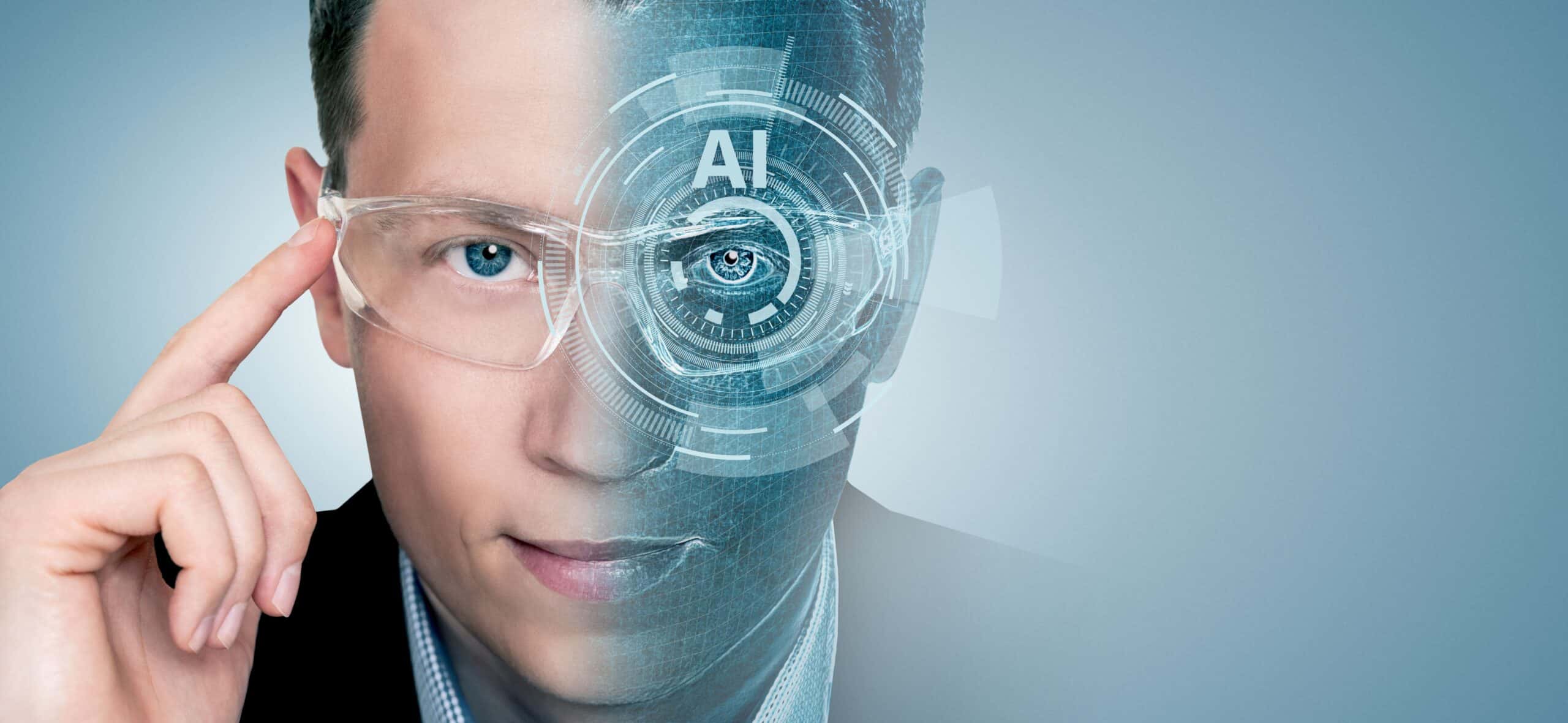- Immersive technologies enable more efficient employee training
- Forget the paperless office – the touchless office is the next big thing
- Virtual meetings are kicking off, saving time and increasing efficiency
- Web-based collaboration tools help companies and employees embrace remote work models
- Smart assistants for future-oriented enterprises
- Intelligent workspaces help you work smarter, not harder
- Touchless technology heralds the office of the future
- Desktop-as-a-Service enables reliable and scalable working environments
- Contactless workplaces are the digital ecosystems of tomorrow
The world is undergoing a massive tech-driven transformation, introducing changes in every aspect of our society. The ways we used to work and run our businesses are completely different from how we do things today. This is especially visible in the job market. Following emerging trends – like increased reliance on innovative technologies – the labour market has been experiencing some drastic changes as well. As a result of the fast-paced digitalisation and implementation of cutting-edge technologies, today’s workforce has acquired vastly different education and training compared to the previous generation. At the same time, those who haven’t been adequately educated or trained to meet the increased standards of the labour market will need to acquire a different set of skills to succeed.
It’s not just the repetitive tasks that are being automated. We see many roles, such as those of assistants and HR agents, increasingly being replaced by intelligent solutions. It’s therefore critical to rethink our roles in this data-driven world and acquire new skills. With new working models and new technologies continuously emerging, the smart workplace will continuously measure our performance, improve our efficiency and creativity, and help our organisations grow.
Immersive technologies enable more efficient employee training
In the past, employee training was elaborate and time-consuming. It had to be well-planned out and assessment alone was not an easy task. Thanks to technological advancements, the training process has become faster and more efficient. Immersive technologies that include virtual reality (VR), augmented reality (AR), and extended reality (ER) are being adopted by an increasing number of employers. According to JFFLabs, immersive training could help new hires boost their productivity by an impressive 50 per cent. And as a result of the increased implementation of AR and VR, the global immersive tech market, which includes virtual and augmented reality, could grow by 7.7 per cent by 2022, hitting $6,3 billion in revenues worldwide.
STRIVR, a California-based information technology company that specialises in VR and customer experience, has developed a VR platform that allows companies to train their employees by immersing them in a virtual environment. It combines VR, learning theory, data science, and spatial design to offer various types of training, including soft skills enhancement, health and safety training, and operational efficiency training. Among other things, the company offers pro services to “get companies up and running with its software, including strategy and planning, content production, and on-site hardware configuration and management.” And we can expect more companies to use immersive technology to create the workforce of tomorrow and gain a competitive advantage. Even the US Fire Administration (USFA), an entity of the US Department of Homeland Security’s Federal Emergency Management Agency (FEMA), has recognised the value of virtual training, as it is safer than training on site. “If you are a training officer looking for a practical, safe alternative to dangerous live fire scenarios, take a look at virtual reality training,” says a spokesperson for the USFA.
Forget the paperless office – the touchless office is the next big thing
Digitalisation has brought many changes in the way we conduct business. Those who remember offices with desks with piles of paperwork to be dealt with, now appreciate digital forms and intelligent software to quickly analyse data and generate actionable information you can pass on to your colleague or boss. Modern offices aren’t just equipped with intelligent solutions, but with touchless technology as well. One way to create a touchless office is to implement control apps that reduce the number of touchpoints anywhere in the business complex or office.
A recent solution from real estate company Cushman & Wakeman, dubbed the ‘Six Feet Office’, is a concept to showcase how existing offices can be transformed into workspaces respecting social distance, without feeling like you’re working in a cubicle. The company used its office space in Amsterdam to showcase the layout that includes “the use of large circles and other visual cues on the floors (similar to hospitals) to help ensure a separation of six feet between employees at all times”. Given that the current situation requires the adherence to the social distancing measures, we’ll probably see more and more companies adopting this approach. In the future, similar solutions will be implemented to help employees keep their working space safe during the corona crisis, whether at the office or at home.
Virtual meetings are kicking off, saving time and increasing efficiency
Remote work is one of many emerging trends, and by the look of things, it’s here to stay. There are numerous reasons why people prefer working from home. For one, they don’t have to spend hours commuting just to get to the office. And as we all know, traffic jams can take up to a couple of hours, depending on whether we live close to a business district or in a more remote area. Whichever the case may be – thanks to technology, organising and attending a work meeting has never been easier, and there are numerous platforms to choose from.
Kirstin Ferguson, an Adjunct Professor at the QUT School of Business who also holds a PhD in leadership, agrees that virtual meetings, compared to traditional meetings, are actually more productive and efficient. “If you have a well-run virtual meeting, your agenda will have been circulated ahead of time, pre-reading will have been done by attendees and the meeting will start and finish on time. Having virtual meeting ‘rules’ such as staying on mute when not talking, asking questions in the chat function or using the raised hand to indicate you want to speak, allocating time for breaks and having a Chair who keeps the discussion on track, will all mean an effective meeting where decisions are made and time is saved.” While some aspects of work seemed to be working just fine a decade ago, today 94 per cent of businesses use video conferencing tools, which are proving to be far more productive. As much as 75 per cent of executives predict that virtual meetings will replace conference calls. And given that as much as 89 per cent of “employees state that video conferences reduce the time it takes to complete projects,” this trend is set to grow in the future as well.
Web-based collaboration tools help companies and employees embrace the remote work model
Collaboration and transparency are the foundation of any successful company and in this digital era, businesses are offered a myriad of web-based tools that make this possible. In fact, The global team collaboration software market size was valued at $9.5 billion in 2019 and is expected to have grown at a compound annual growth rate (CAGR) of 12.7 per cent by 2027. By now, most companies have embraced the remote work model. To function at the highest level and manage virtual teams that work from home, companies need to choose a tool that ensures transparency, helps employees boost productivity, and facilitates collaboration. One such tool has been developed by San-Francisco-based Nectar. Their platform “creates a simple, standardised way for organisations to give out recognition, spot bonuses, awards and wellness challenges all within budget”. And if you’re working with international teams, Codepen might be for you, as this social development environment allows “developers to share their work, browse other developers’ code and collaborate together.”
Intelligent assistants for future-oriented enterprises
From Alexa to Siri to Cortana, we’ve been using chatbots for quite some time now. We can ask them to give us an update on the current news or weather, play music, and much more. We’re also seeing businesses increasingly leveraging virtual assistant technologies. In fact, the latest estimates show that the global chatbot market is expected to reach $3,39 billion by 2027, growing at a compound annual growth rate (CAGR ) of 27.3 per cent. Some of the key factors fuelling this market include chatbot integration with social media and the need to improve the customer experience. As a result, we see many businesses adopting AI-assistants that can complete various tasks without any human assistance. And customers are more than satisfied with their services. For instance, field appraisers can now perform contact-free estimates. A chatbot for virtual appraisals uses photo-based estimations for faster and safer claims processing. Assessments are done quickly and effectively, “without the need for a driver to go to the repair body shop or interact at close quarters with an appraiser in the field.”
Intelligent workspaces help you work smarter, not harder
In many industries, the traditional 9-5 job is increasingly becoming a thing of the past, and so is the office cubicle. A recent study shows that as much as 51 per cent of employees would appreciate it if their companies would offer more flexible work options, such as telecommuting and the option to work outside conventional business hours. To cater to the millennial workforce, organisations should, as Gartner suggests, “let workers choose their own style of work as this will increase retention rates by more than 10 percent.” This entails making their workspace truly intelligent, equipped with cutting-edge technologies for various platforms, smart assistants, and tools that promote collaboration. Even architects are aware of the new trend. “Office desks have shrunk over the years, from 1.8-metre to 1.6-metre, to now 1.4-metre and less, but I think we’ll see a reversal of that, as people won’t want to sit so close together,” notes Arjun Kaicker, who heads up analytics and insights at Zaha Hadid Architects (ZHA).
Touchless technology heralds the office of the future
The Internet of Things (IoT) and smart technology have already changed the way we run our offices and perform at work. But to be even more productive and efficient, as well as adhere to social distancing guidelines, we will need more intelligent solutions – such as contactless technology. “We’ll need to reconfigure offices so they become the home for collaboration,” emphasises Matthew Marson, head of smart places at management and advisory services firm WSP Global. “If we’re taking fewer trips to the office and those trips are for collaboration purposes only, then we’ll need better space management.” Increasing numbers of companies have started implementing contactless technologies. Zaha Hadid Architects’ new headquarters for the Bee’ah waste management company in Sharjah, UAE, for instance, is an excellent example of the smart and contactless workspace of the future. The building boasts ‘contactless pathways’ where employees don’t need to touch anything as doors are equipped with motion sensors and facial recognition technology. A lift and even a coffee can be ordered in advance, using a smartphone.
Desktop-as-a-Service enables reliable and scalable working environments
It’s estimated that close to 40 per cent of workers in the EU work from home. And we’re certain that this number will only become higher. Companies have realised that remote work allows them to get the best hires, regardless of their location, and employees have learned to appreciate that they don’t have to waste time or money on commutes. A Desktop as a Service (DaaS) infrastructure enables all employees the use of a virtual desktop and eliminates costs spent on new hardware. It allows the introduction of “more devices without increasing the security risks as no data is copied to end-point devices”.
Morris Tabush, President of the Tabush Group, a VDI provider for small to midsize businesses, has already rolled out its own DaaS platform that supersedes local computers in terms of speed. “We build and run our own DaaS platform called Boxtop. We have our own cloud infrastructure and use VMWare Horizon View as the main ingredient to manage and deliver full persistent Windows desktops (Server 2016 in ‘desktop mode’). We don’t use any public cloud resources. Our goal from the beginning was to make our DaaS platform look and feel as fast or faster than a local PC, so people didn’t feel the lag of cloud, Remote Desktop Protocol (RDP), or LogMeIn, or the typical pains of a traditional Citrix session.”
Cloud-based tools help build the future
The number of companies whose staff members are working from home has risen to a staggering 88 per cent. In fact, as much as 90 per cent of remote workers plan on working remotely in the post-pandemic world. To make the best of remote work as the new standard, there are numerous cloud-based tools to help workers and companies streamline their workloads. Some of the many benefits of cloud computing include easy access to information, the ability to enable multiple users to work on the same digital file, tools can be used anywhere you feel comfortable working, it keeps your data in one place, and it’s cost-efficient. Although cloud service providers implement the best security standards, storing data and important files on external service providers also makes you vulnerable to risks, especially when it comes to sensitive data. It’s important to carefully weigh all the risk scenarios and make sure you take steps to ensure your data is safe at all times.
Contactless workplaces are the digital ecosystems of tomorrow
Digital technology transforms almost every aspect of our lives, and the same is happening to our workplaces. The office of the future will be vastly different from what we are used to today. Everything we do will be quantifiable – and quantified! – and smart technologies and wearables will all be part of data-driven digital ecosystems of the future. The remote work trend that saw incredible acceleration during the pandemic will undoubtedly be here to stay, even long after the corona crisis subsides. Thanks to technology we’re now more connected than ever, and with ever more intelligent solutions at our fingertips, there’s no doubt that the tech-powered workforce of tomorrow will help organisations and companies thrive well into the future.







